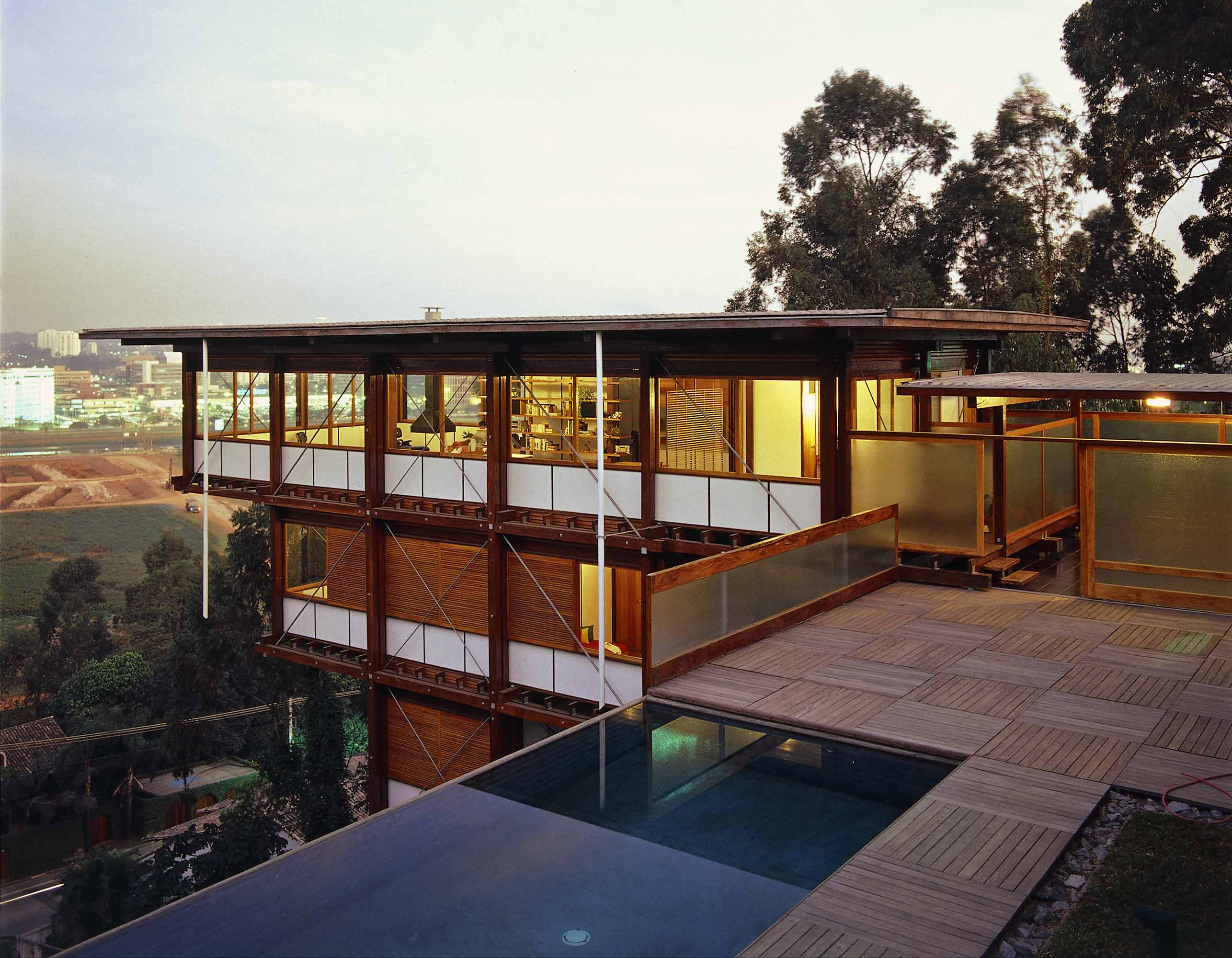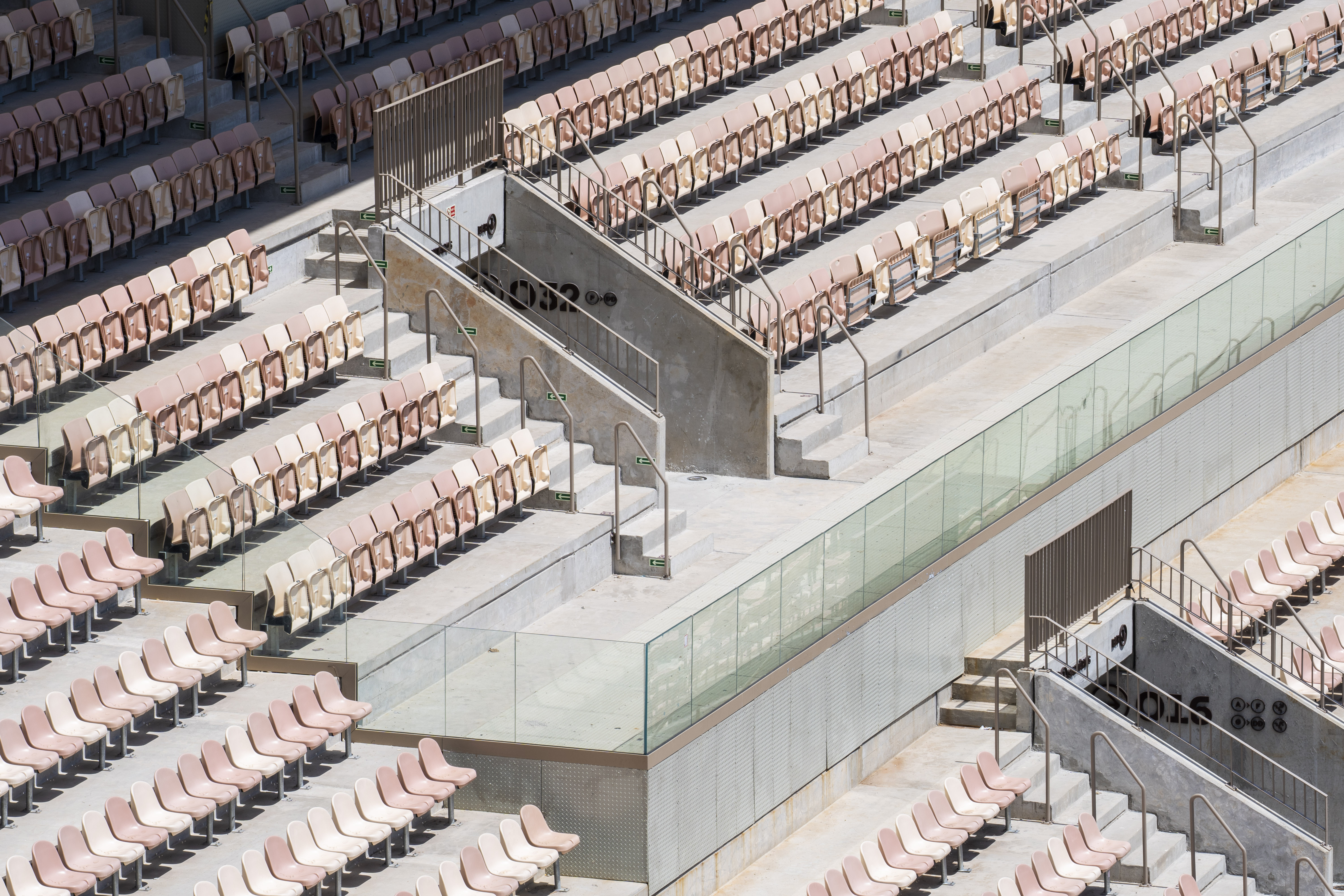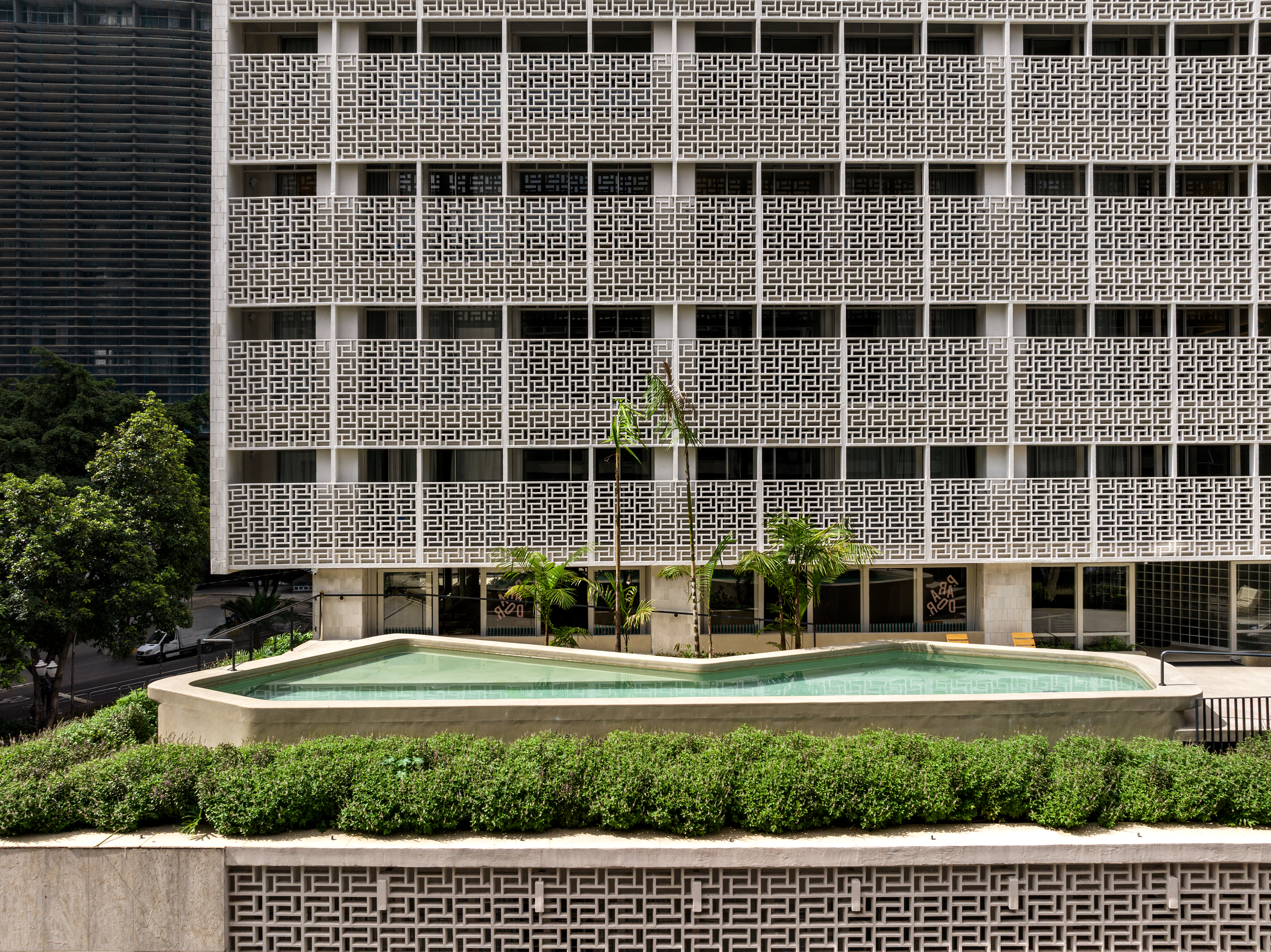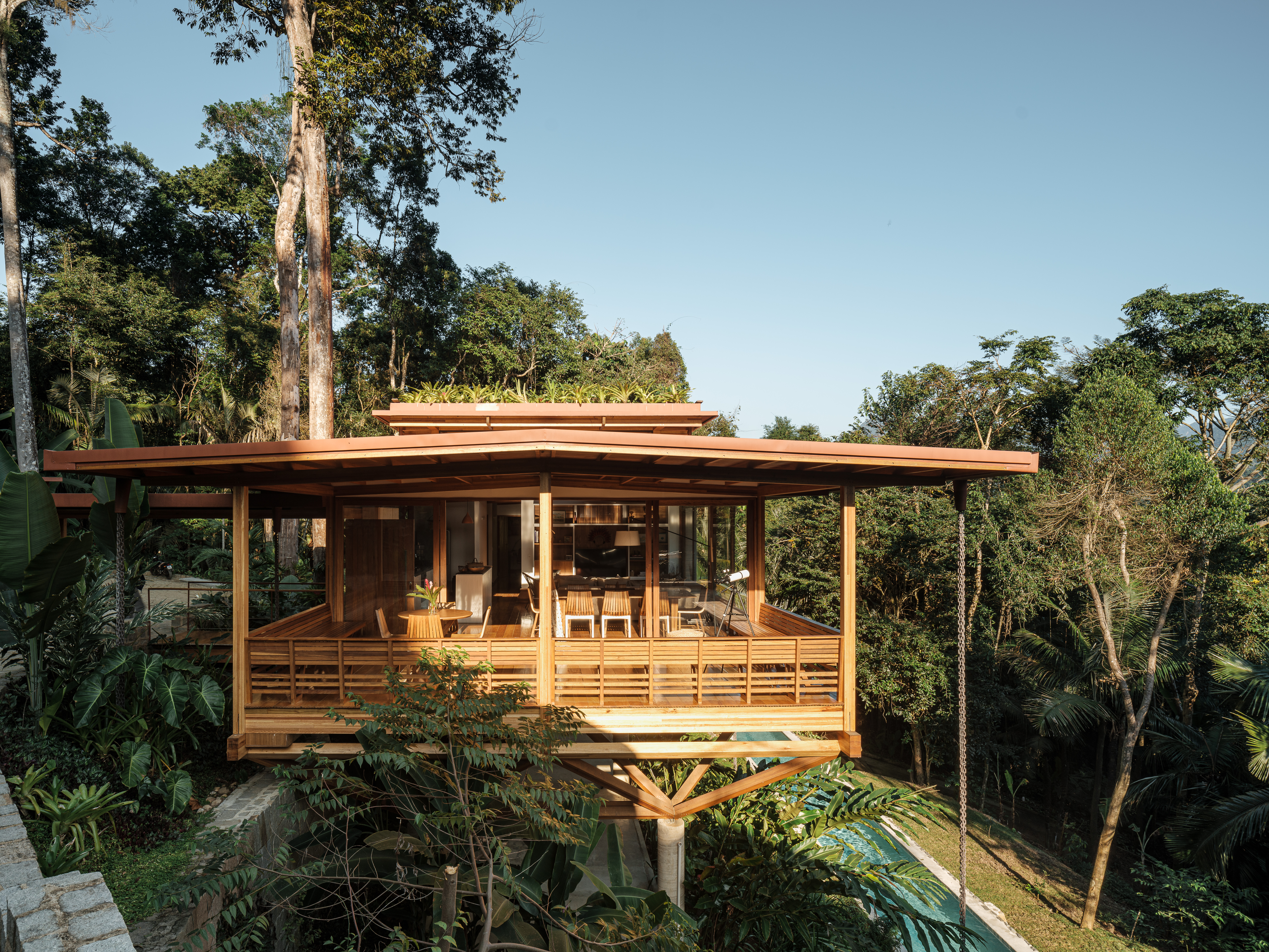Marcos Acayaba: São Paulo, modernism and building in Brazil

From designing an iconic house for his sister-in-law (now his current house and studio) when he was only 28, to working on a variety of inspiring public projects and teaching at the University of São Paulo, Marcos Acayaba's more than 30-year career and architectural explorations into different techniques, forms and materials, have placed him among the country's most esteemed creatives.
Wallpaper*: Has your neighbourhood (Cidade Jardim) changed much since you built Residencia Milan there?
Marcos Acayaba: Yes, there was a lot of construction and everything has been built since then. At first we had no gate and the house was open to the street, and had no garden. Then things changed and for security reasons we started to close the house off and to be more careful. We needed to add a fence and gate.
W*: Was Residencia Milan the first house you designed?
MA: No, it was about the tenth. It was for my sister-in-law who was a great client. If I had designed it for myself it would have been so much more difficult. It is a difficult task for an architect to design his house, especially for a young one and then I was just 28 years old. And I love it; I really think it is the best thing I have ever designed.

The Milan House.
W*: The materials you used here are very simple – concrete and wood. What type of wood did you use?
MA: It is a Brazilian type of wood, called Perobinha-do-Campo. It used to be very common back then, but it is almost extinct today and it's really rare to find it.
W*: You are a born and bred Paulistano. What do you think of the city of São Paulo?
MA: São Paulo is a place in permanent construction mode. Everything changes so quickly; there is really no part of the town that remains as you remember it a few years ago. In the 1960s and 70s it was a very pleasant and smaller city but now it is so vastly different, especially if you count the suburbs. And it is very dynamic but can be quite aggressive and violent too. It is a city that offers a lot of work opportunities, which is why lots of people come here, from all over Brazil but also from abroad. It is a melting pot for different cultures.

Baeta House, 1993.
W*: There is a strong modernist legacy here. How did that affect the architectural landscape?
MA: It all started with the spirit of Le Corbusier. Brazil was a country with strong ties with France – and then with the US. Le Corbusier came here to make the Rio project and the Brazilian team that worked with him on that, mainly Niemeyer and Costa, gained a lot of recognition after that. So modern architecture had a great value in Brazil at that moment.
W*: How did São Paulo develop after that?
MA: São Paulo was mainly a commercial and industrial city; it was not like Rio, which was the capital then. It became a city with a lot of vertical buildings. There was also a big influence from the American architects, like Richard Neutra, to the Paulista architects in the 1960s. Their influence was as big as Le Corbusier's. For example, Artigas created Frank Lloyd Wright-style architecture and another important architect, Rino Levy, also designed with an American influence.

Olga House, 1990-2.

Butantã Housing, 2004.

Acayaba House, 1997.
INFORMATION
For more information, visit the Marcos Acayaba Arquitetetos website
Wallpaper* Newsletter
Receive our daily digest of inspiration, escapism and design stories from around the world direct to your inbox.
Ellie Stathaki is the Architecture & Environment Director at Wallpaper*. She trained as an architect at the Aristotle University of Thessaloniki in Greece and studied architectural history at the Bartlett in London. Now an established journalist, she has been a member of the Wallpaper* team since 2006, visiting buildings across the globe and interviewing leading architects such as Tadao Ando and Rem Koolhaas. Ellie has also taken part in judging panels, moderated events, curated shows and contributed in books, such as The Contemporary House (Thames & Hudson, 2018), Glenn Sestig Architecture Diary (2020) and House London (2022).
-
 Warp Records announces its first event in over a decade at the Barbican
Warp Records announces its first event in over a decade at the Barbican‘A Warp Happening,' landing 14 June, is guaranteed to be an epic day out
By Tianna Williams
-
 Cure your ‘beauty burnout’ with Kindred Black’s artisanal glassware
Cure your ‘beauty burnout’ with Kindred Black’s artisanal glasswareDoes a cure for ‘beauty burnout’ lie in bespoke design? The founders of Kindred Black think so. Here, they talk Wallpaper* through the brand’s latest made-to-order venture
By India Birgitta Jarvis
-
 The UK AIDS Memorial Quilt will be shown at Tate Modern
The UK AIDS Memorial Quilt will be shown at Tate ModernThe 42-panel quilt, which commemorates those affected by HIV and AIDS, will be displayed in Tate Modern’s Turbine Hall in June 2025
By Anna Solomon
-
 The new MASP expansion in São Paulo goes tall
The new MASP expansion in São Paulo goes tallMuseu de Arte de São Paulo Assis Chateaubriand (MASP) expands with a project named after Pietro Maria Bardi (the institution's first director), designed by Metro Architects
By Daniel Scheffler
-
 An Upstate Sao Paulo house embraces calm and the surrounding rolling hills
An Upstate Sao Paulo house embraces calm and the surrounding rolling hillsBGM House, an Upstate Sao Paulo house by Jacobsen Arquitetura, is a low, balanced affair making the most of its rural setting
By Ellie Stathaki
-
 Step inside the secret sanctuary of Rua Polonia House in São Paulo
Step inside the secret sanctuary of Rua Polonia House in São PauloRua Polonia House by Gabriel Kogan and Guilherme Pianca together with Clara Werneck is an urban sanctuary in the bustling Brazilian metropolis
By Ellie Stathaki
-
 São Paulo's Pacaembu stadium gets a makeover: we go behind the scenes with architect Sol Camacho
São Paulo's Pacaembu stadium gets a makeover: we go behind the scenes with architect Sol CamachoPacaembu stadium, a São Paulo sporting icon, is being refurbished; the first phase is now complete, its architect Sol Camacho takes us on a tour
By Rainbow Nelson
-
 Tour 18 lesser-known modernist houses in South America
Tour 18 lesser-known modernist houses in South AmericaWe swing by 18 modernist houses in South America; architectural writer and curator Adam Štěch leads the way in discovering these lesser-known gems, discussing the early 20th-century movement's ideas and principles
By Adam Štěch
-
 Year in review: the top 12 houses of 2024, picked by architecture director Ellie Stathaki
Year in review: the top 12 houses of 2024, picked by architecture director Ellie StathakiThe top 12 houses of 2024 comprise our finest and most read residential posts of the year, compiled by Wallpaper* architecture & environment director Ellie Stathaki
By Ellie Stathaki
-
 Restoring São Paulo: Planta’s mesmerising Brazilian brand of midcentury ‘urban recycling’
Restoring São Paulo: Planta’s mesmerising Brazilian brand of midcentury ‘urban recycling’Brazilian developer Planta Inc set out to restore São Paulo’s historic centre and return it to the heyday of tropical modernism
By Rainbow Nelson
-
 All aboard Casa Quinta, floating in Brazil’s tropical rainforest
All aboard Casa Quinta, floating in Brazil’s tropical rainforestCasa Quinta by Brazilian studio Arquipélago appears to float at canopy level in the heart of the rainforest that flanks the picturesque town of Paraty on the coast between São Paulo and Rio de Janeiro
By Rainbow Nelson